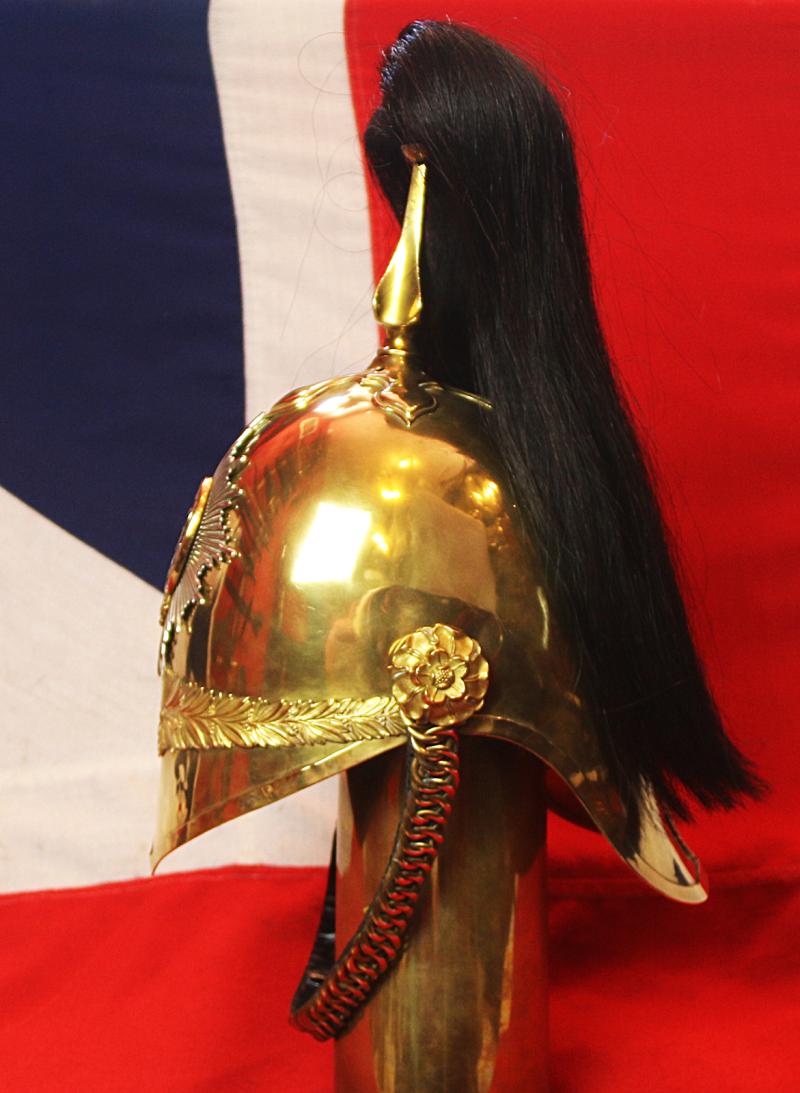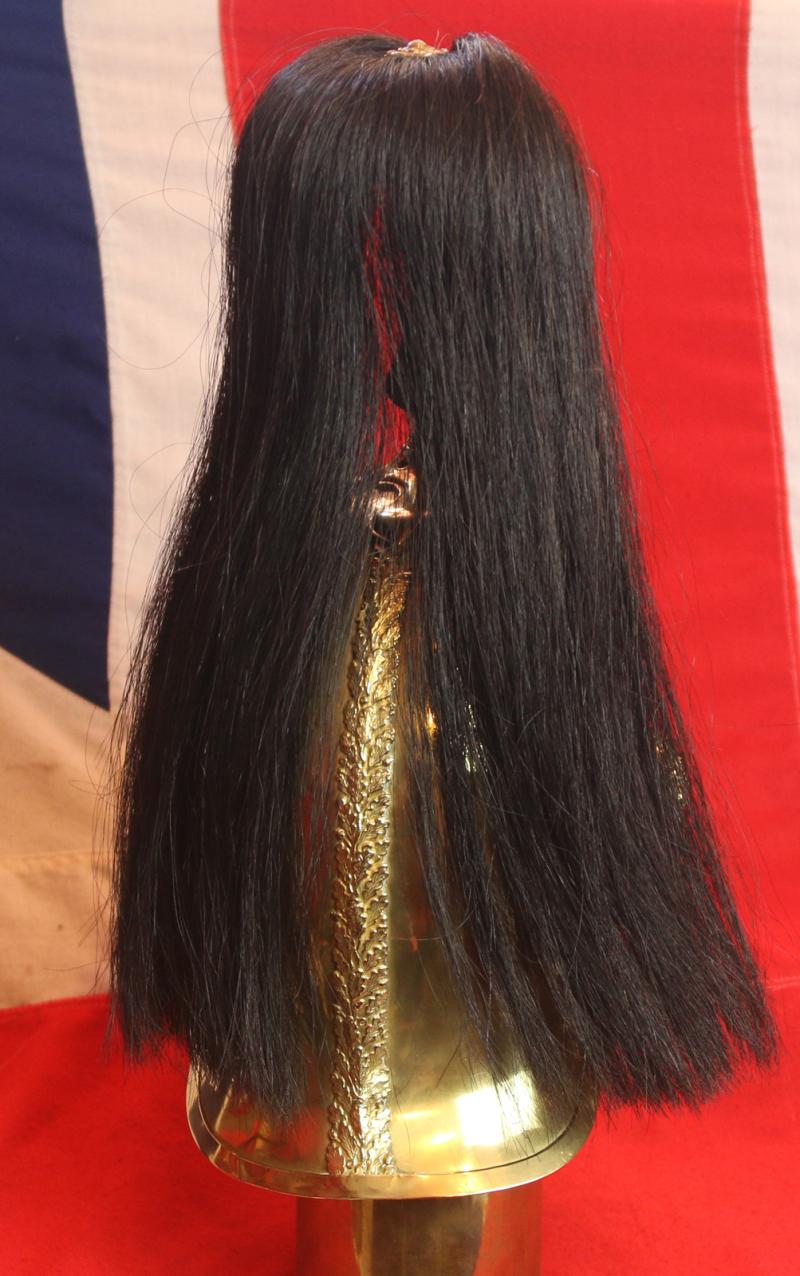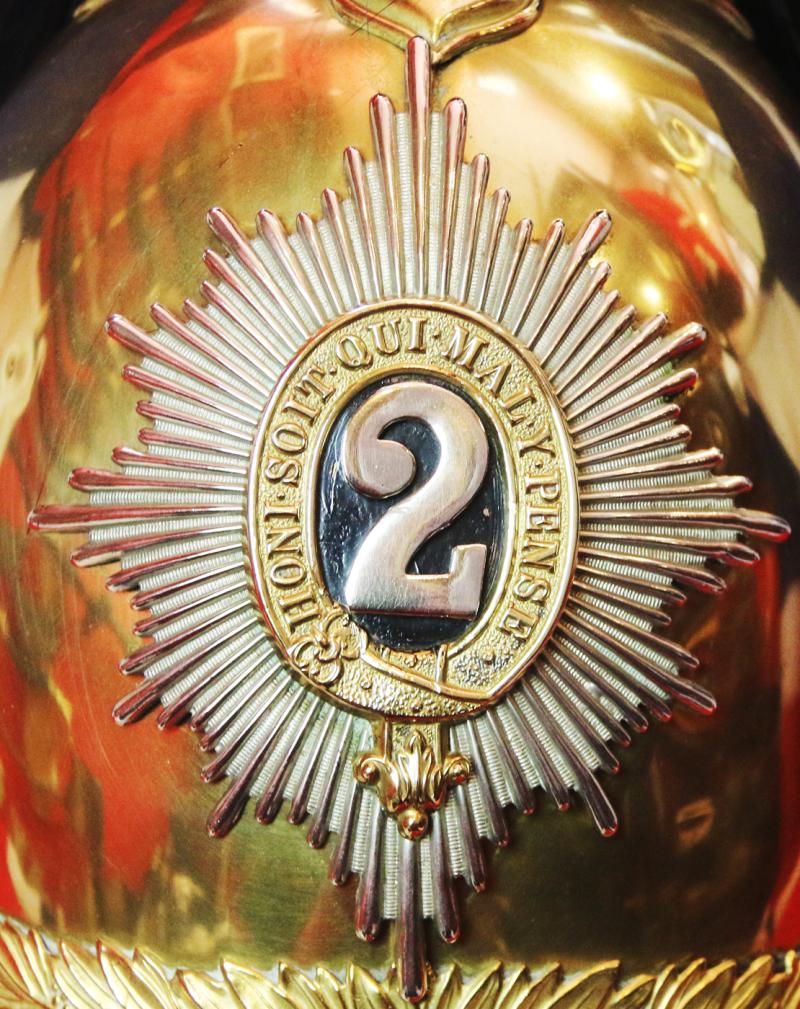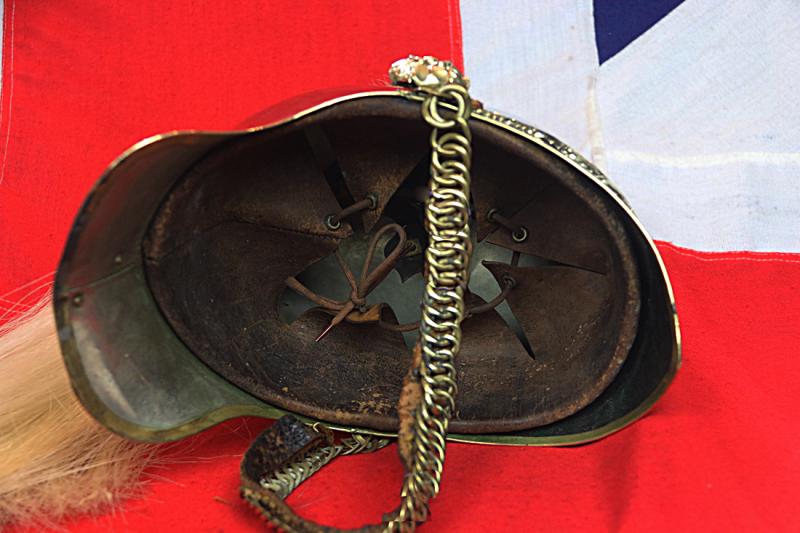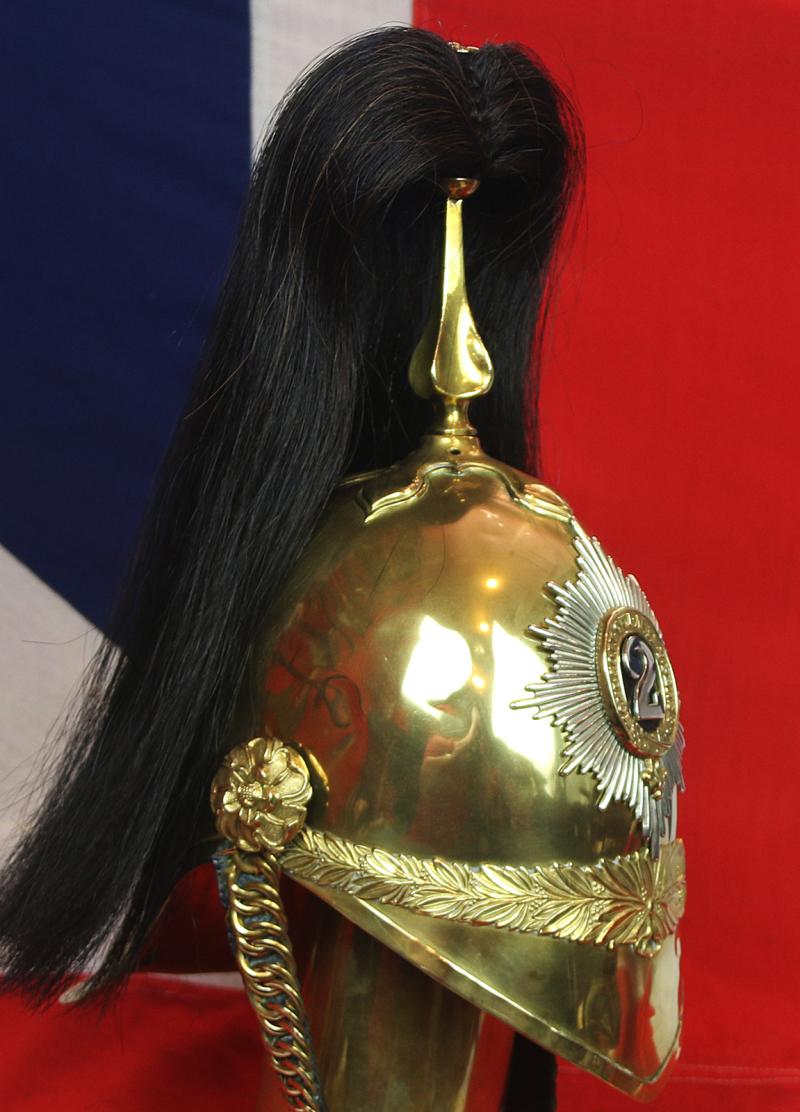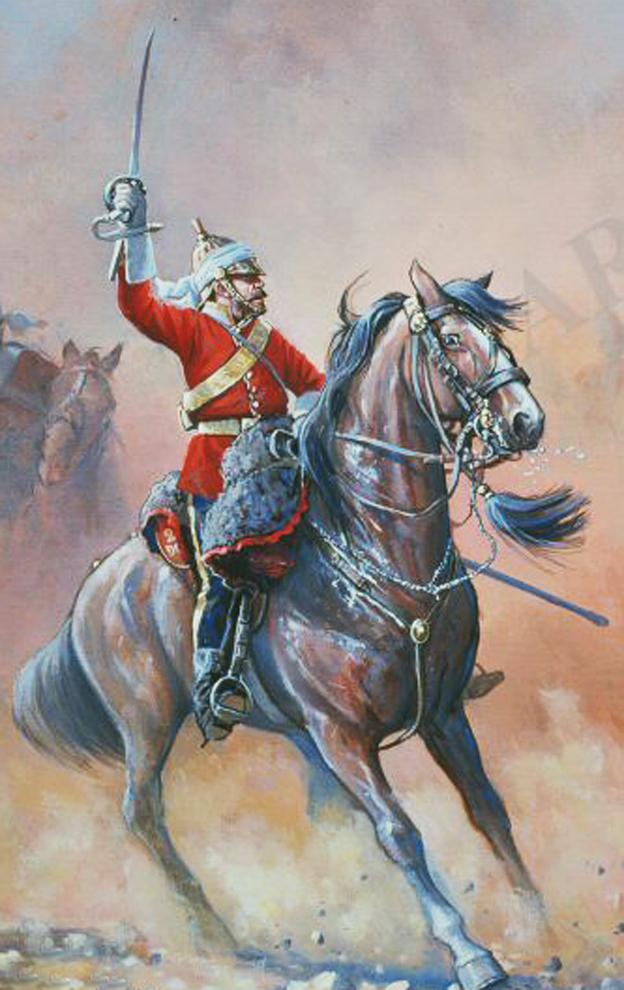A Wonderful, Original, Antique Victorian Helmet of the 2nd Dragoon Guards {The Queen's Bays}
Superb condition with gilt finish skull and decor, all original lining present and chin chain. One of the best surviving examples one can see in our out of a museum
Following a long period of policing and garrison duties at home, the unit next deployed to India after the outbreak of mutiny there in 1857. It went on to help capture Lucknow in 1858.
It then spent most of the remainder of the 19th century garrisoning India or on home service. It also deployed to the Boer War (1899-1902) in 1901, taking part in the anti-guerrilla operations there, and sustaining heavy losses at Leeuwkop in 1902.
The outbreak of the First World War (1914-18) saw it deploy to the Western Front with the 1st Cavalry Division. It fought in both a mounted and infantry role in many engagements, including the Retreat from Mons, (1914), Le Cateau (1914), the Marne (1914), Ypres (1914), the Somme (1916), Arras (1917), Cambrai (1917) and the Scarpe (1918).
How Major George Harold Absell Ing, Of The 2nd Dragoon Guards (Queen's Bays), Won The D.S.O. At The Second Battle Of Ypres
On the evening of Wednesday, May 12th 1915, the 28th Division which held that part of our line from a point northeast of Verlorenhoek to the Bellewaarde Lake, and which had been fighting continuously since April 22nd, went into reserve, its place being taken by the 1st and 3rd Cavalry Divisions, under general de Lisle. It was a difficult line to defend, since there were no natural advantages and our trenches were to a large extent recently improvised. This cavalry were very speedily to discover to their cost, for early on the following morning a terrific bombardment began against their front, shells of every description raining down in a continuous stream. The brunt of the bombardment fell on the 3rd Division, and the 3rd Dragoon Guards, I the 6th brigade, were almost buried alive beneath the debris of their parapet. But farther north, where the 2nd Dragoon Guards were posted, close to the Ypres-Zonnebeke road, the shelling was also very heavy, and about 8 a.m. part of the regiment on their right began to retire, their trenches having been rendered untenable. The retirement might easily have become a general one, had not a brave officer of the Queen?s Bays, Major Ing, at great personal risk, saved the situation. Leaving his own trench, he ran out into the open road, standing there, with shells every moment bursting around him, stopped the retirement of some forty men and directed them to take shelter, some in shell holes and others in ditch beside the road on their flank. By this prompt and gallant action, for which he was subsequently awarded the Distinguished Service Order, Major Ing rendered a most invaluable service. Major Ing entered the 2nd Dragoon Guards in September 1900, and served in the South African War, in which he was slightly wounded, and for which he received the Queen?s Medal with five clasps. He was promoted captain in February 1914, and attained his present rank in August 1911. He is thirty-five years of age, and his home is at Crockham Hill, Kent. Extracted from 'Deeds That Thrill The Empire'
The regiment was renamed the Queen's Bays (2nd Dragoon Guards) in 1921 and spent the inter-war period in Egypt, India and England, where it mechanised with light tanks in 1937. Two years later, it joined the Royal Armoured Corps.
It fought in northern France in May and June 1940, before evacuating from Brest. By November 1941, it had recovered and re-equipped, deploying to North Africa and fighting at Gazala and the First and Second Battles of Alamein in 1942. At one point in the campaign, it remained in action continuously for a record 19 days - longer than any other armoured regiment in that theatre.
After taking part in the Tunisian campaign in 1943, it moved to Italy in May 1944, fighting in several engagements including the Battle of Argenta Gap (1945).
Code: 25327
1995.00 GBP


